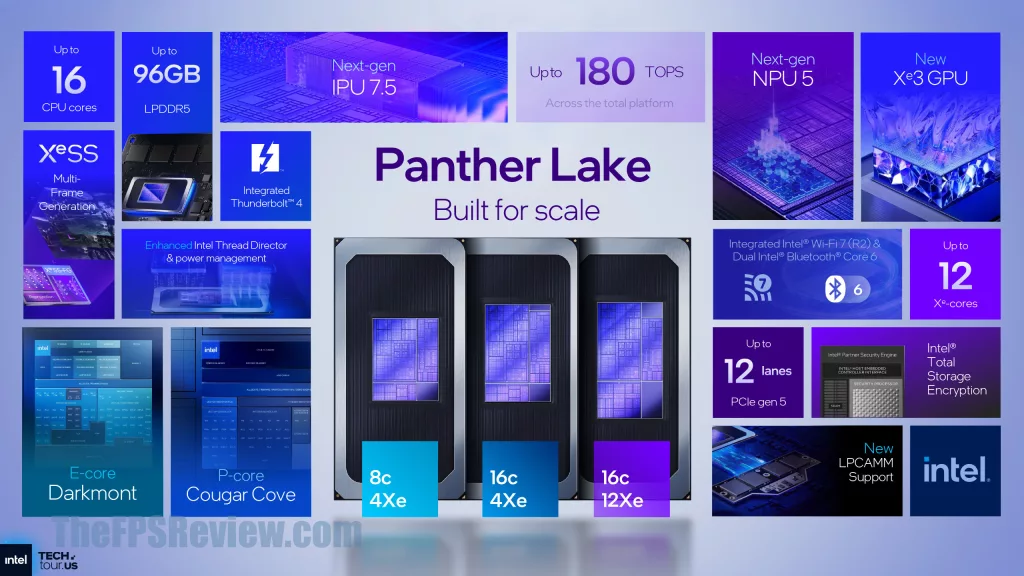Conclusion

In summary, Intel Panther Lake looks like a solid platform to move Intel forward in 2026 on the mobile platforms. Intel has taken the learnings of Lunar Lake and the learnings of Arrow Lake and combined the two into a scaled-up version for the next generation mobile platforms.
Yet, during our presentations, we couldn’t help but think this all sounds like a “+” generation to us, “Lunar Lake+” and “Xe2+”, listening to the improvements. Panther Lake’s Cougar Cove, Darkmont, and Xe3 are scaled-up versions of the previous generations with enhancements and optimizations, learning and fixing bottlenecks from the previous generations. It’s not a bad thing, of course, but Panther Lake Compute tile and GPU tile are not a revolutionary new IP architecture, rather an improvement upon an already existing architecture, scaled up. There are still some significant changes, so the potential is there for a generational improvement on both CPU and GPU performance and efficiency.
All of this is possible with the Intel 18A manufacturing process, which applies to the Compute tile. The GPU tile still uses Intel 3 and does not benefit from a node process shift. That said, the process shift in the Compute tile is significant, and with the transistor changes, could make for substantial power and efficiency differences compared to Lunar Lake. The proof will be in the pudding, naturally.
Intel is offering compelling configuration options for OEMs, and the 16-core 12 Xe3 configuration is certainly very intriguing for mobile handhelds and other devices. It will be interesting to see how those perform, and the power and efficiency. While none of this currently applies to desktop CPUs or discrete next-generation GPUs, it will be interesting to see how Panther Lake plays out in 2026 and what that means for the next-generation desktop CPUs and GPUs from Intel. We look forward to it; maybe 2026 will be Intel’s year for greatness.
